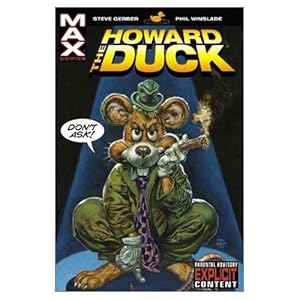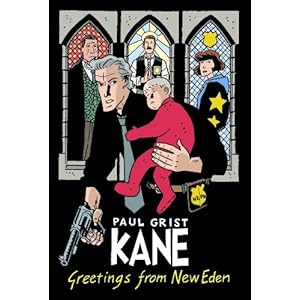What I try to do with reviews at this Bookshelf blog is keep it simple and spoiler-free, and let you know whether I'd recommend you pick up a copy of what I just read. Seems to work okay. This time, a brief review of
Showcase Presents: Dial H for Hero (DC, 2010)

Here's a book that I was not intending to buy. The old funnybook budget's been a little tighter lately, plus I decided in May to quit spending money on books and music unless I knew full well that I was going to love and revisit them. (It's high time I got an occasional comp copy to review, don't you think?) So, since I had not read
Dial H for Hero, I did not order this recent collection. Then I took a pile of old textbooks to Once & Again and found a copy of this for four bucks. This will be going back to Once & Again this week.
One of my favorite fun comic book websites is
Dial B for Blog, a tribute to books from the 1950s through the 1970s that was in equal parts witty, well researched and lavishly illustrated. Its owner, "Robby Reed," wrapped up the blog after 500 fun entries, but it remains online for everybody to enjoy. You should check it out, pronto.
I mention this because inspiring that blog was the only good thing that Dial H for Hero ever did. This was an incredibly dopey comic that started in 1966 in the pages of DC's horror book
House of Mystery, an example of DC rushing out more superhero books in the wake of
Batman's TV success. It was written by Dave Wood and illustrated, competently but without enthusiasm, by Jim Mooney.
I've got a lot of patience for silly old comics, but this thing really is past me. Conceptually, it's an
okay Silver Age concept. Some brainiac kid finds an ancient dial, translates it, and when he uses it, he transforms into one of several different spandex-clad superheroes. Each sixteen-page story usually finds room for three new heroes to foil the latest outlandish and implausible supervillain scheme. These are the sort of things where some baddie must spend millions of dollars buying submarines and giant robots and hiring a dozen black-clad hoodlums to rob the Littleville minor league ballpark of its gate receipts.
I could possibly enjoy the silly wish-fulfillment of its premise if it wasn't so incredibly stupid. Robby Reed himself is the first problem. Like TV's
Joe 90, it's kind of difficult to root for some kid you'd rather bang against the floor for lunch money. He transforms into utterly retarded heroes, reaching, I think, a nadir with a toddler who runs around with a bottle that squirts shrinking juice. This is played straight. The heroes, each of whom pretends to be unique and not Robby's alter ego, are instantly treated with awe and respect by the police, who give them access to confidential files. Even the toddler. The high school boys of Littleville collect pin-ups of the battalion of do-gooders who show up in their town. Even the toddler. If you think about it, these pin-ups themselves are almost as improbable as the notion of high school boys in 1966 collecting pin-ups of anybody not named Deanna Lund or Donna Michelle. Oh, and Robby has a catchphrase which he finds a chance to shout at least seven times in each sixteen-page episode.
It's not just that it was hopelessly square and dated when it originally ran in 1966. Seriously, compare the simplistic plotlines and stilted fifties dialogue to what Lee and Kirby were doing at Marvel. (That's stilted
sixties dialogue, man!) These are comics for very small, very unsophisticated children. If your six year-old has seen a single episode of that new Batman cartoon, he won't sit still for this. And as for Jim Mooney, well, I've seen some very good pages of his art over the years. Not one of them is present in this book, which is full of dull, uninspiring, bare-minimum designs and layouts, the sort of thing Curt Swan would have knocked off in his sleep. And I find Swan pretty dishwater dull myself.
I've mentioned before that DC has created a very welcome sub-line to their
Showcase Presents series, giving shorter run series a new outing in 300-page books with a ten-buck price tag. I like the format, and I really, really liked that terrific
Bat Lash collection that they chose to launch it last year, and I hate the possibility that airing complaints like this might impact potential sales, and see the sub-line shelved before we get to rare gems like
Rose and the Thorn or
Inferior 5. I guess DC must have a new Dial H for Hero series on the shelves or something to justify this book, because there's no other excuse for dusting this off when
Sugar and Spike and
The Monster Society of Evil are still in the vaults. Not at all recommended.













